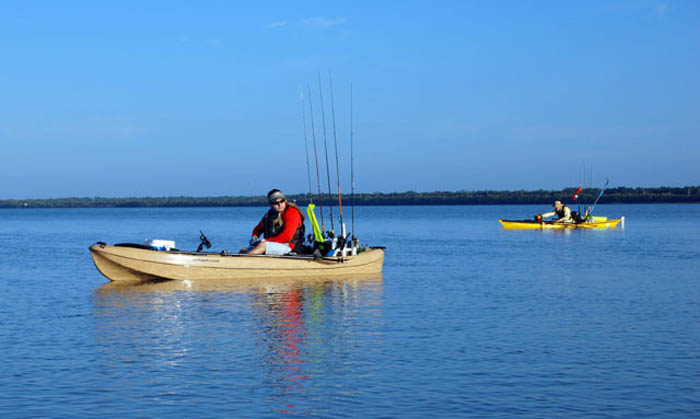
It takes a lot of energy to paddle a kayak or canoe against the wind or through choppy water, especially if you are not in great shape. Many people have started employing an electric engine to help them get to those challenging hard-to-reach spots because doing so can ruin the fun of being on the water.
Electric Engine
Adding a small transom to a boat is simple, and although they are easy to make, many marine supply stores sell ready-made ones that are straightforward to install. One option is to use a popular 30 to 55-pound thrust engine, which, depending on the situation, may propel your Fishing Kayak With Pedals.
A 12-volt/105 amp-hour deep cycle sealed marine battery is required for this motor. Get a power center with a 60 amp circuit breaker installed, if you can afford it. You keep your battery there for safer and simpler handling, and it will support the effective maintenance of the compact, light electric motor.
Mounts For Transom
Many kayaks and canoes feature a transom that is molded into the stern where the trolling motor can be mounted. If not, you can easily make one to fit your needs out of a piece of 20 mm plywood and a 40 mm to 50 mm square, 3 mm thick-walled aluminum tube. It is fastened from gunwale to gunwale with u bolts. You may find several examples of innovative installations of electric motors on boats using transom mounts that have been made to order and manufactured online. If the motor is situated on the boat’s side, it is simpler to hand steer.

Integrated Rudder
Simply attach the motor in place parallel to the fore and aft lines of the Fishing Kayak With Pedals if it already has a rudder installed and you steer it using foot pedals. Then, using the pedals to steer, set the speed and take off. If your boat lacks a rudder, you will have to steer manually.
To gain the most forward propulsion, keep the motor perpendicular to the water. There will be significantly less forward force if the motor is submerged at an angle because, depending on the angle, it is either trying to pull the nose up and out of the water or push it down to bury the bow.
Do Not Submerge the Prop
Keep the motor’s propeller underwater for no more than roughly 12 inches if you want good performance. This reduces the amount of drag that an otherwise long submerged shaft would cause. You can usually adjust the propeller depth on electric motors. Additionally, if you’re cruising in shallow water, doing this will help you avoid coming into contact with the pebbles on the bottom.
Tying Down
It’s crucial to secure the majority of your possessions. Little gear will be lost if you unintentionally capsize, and the majority of it can be easily recovered. Try to keep your anchors, paddles, tackle box, and other frequently used equipment near at hand. This helps keep the boat steady and will lessen the amount of noise made when fishing. Before using your kayak on the water, be sure you have the necessary training.
To choose a kayak that is appropriate for your size and skill level, it is ideal to visit a dealer where you can test out a few various models and use their knowledge. A brand-new entry-level SOT Kayak should cost between £400 and £600. The average kayak is between 8 to 16 feet long, but for comfort and stability, a sea fishing kayak should be at least 13 feet long. You’ll also need a paddle, a seat, appropriate clothing, and some basic safety gear in addition to your kayak. Again, your dealer may offer advice on what’s ideal in this situation, and many dealers will provide a package deal with all of the fundamental necessities at a reasonable price.
Maintain Contact
An extremely beautiful way to spend time outdoors in nature is to set out on adventures in a well-prepared canoe or kayak on rivers, lakes, and calm seas merely to fish or go exploring. Wear a life jacket, and keep a phone in a water-resistant bag or container for emergencies. It is proper seamanship to inform someone of your intentions before leaving as a safety measure in case something should go wrong.
Related posts:

Categories
- Apps (1)
- Automotive (23)
- Beauty (7)
- Business (117)
- Celebrities (2)
- Digital Marketing (21)
- Ecommerce (1)
- Education (18)
- Entertainment (25)
- Events (6)
- Features (4)
- Fitness (10)
- Food (1)
- Forex & Crypto (15)
- General (105)
- Health (48)
- House (61)
- Lifestyle (48)
- Marketing (8)
- Parenting (3)
- Pets (10)
- Real Estate (7)
- Safety and Security (11)
- Social Media (20)
- Sports (96)
- Technology (67)
- Travel (22)



















